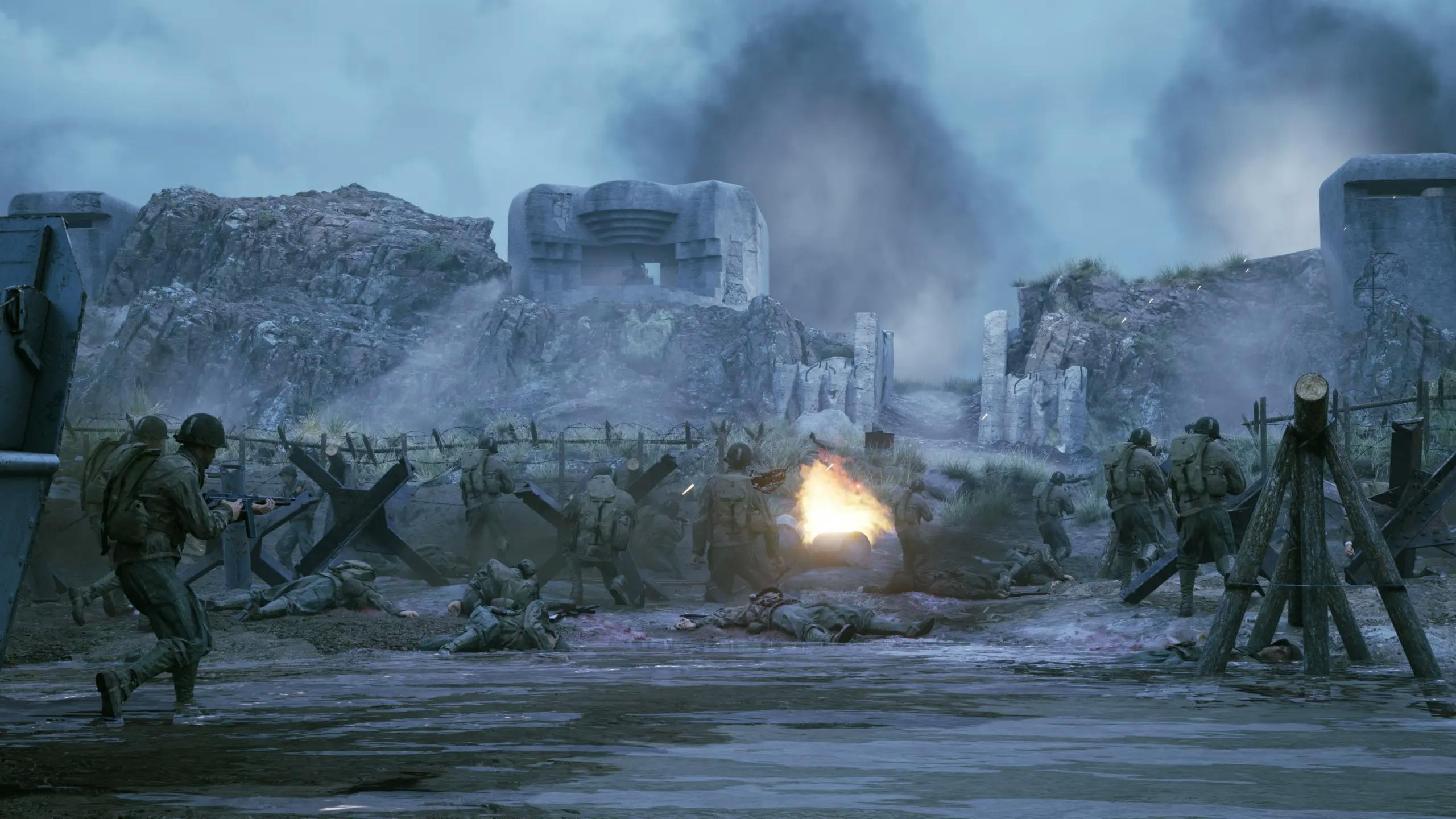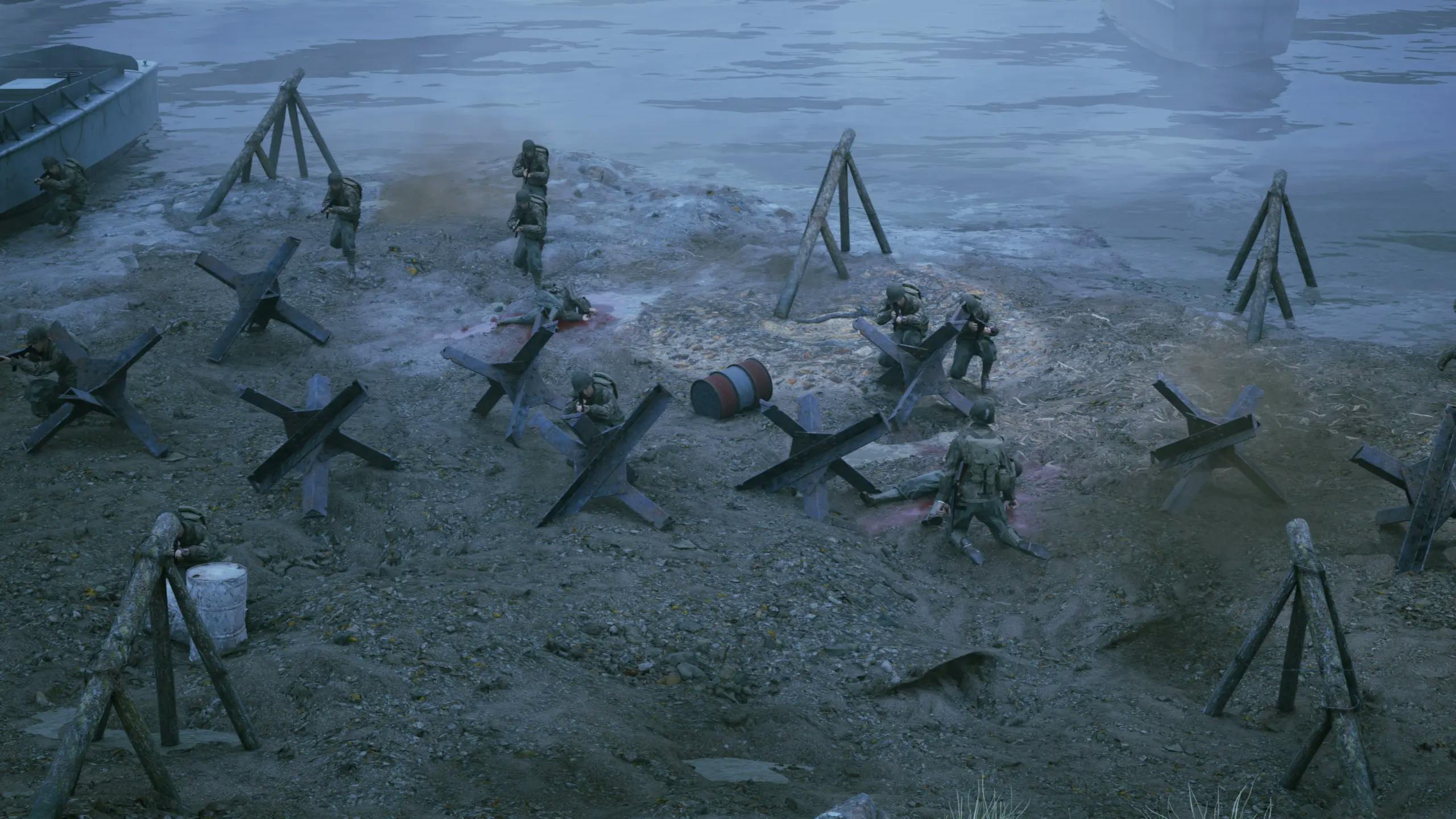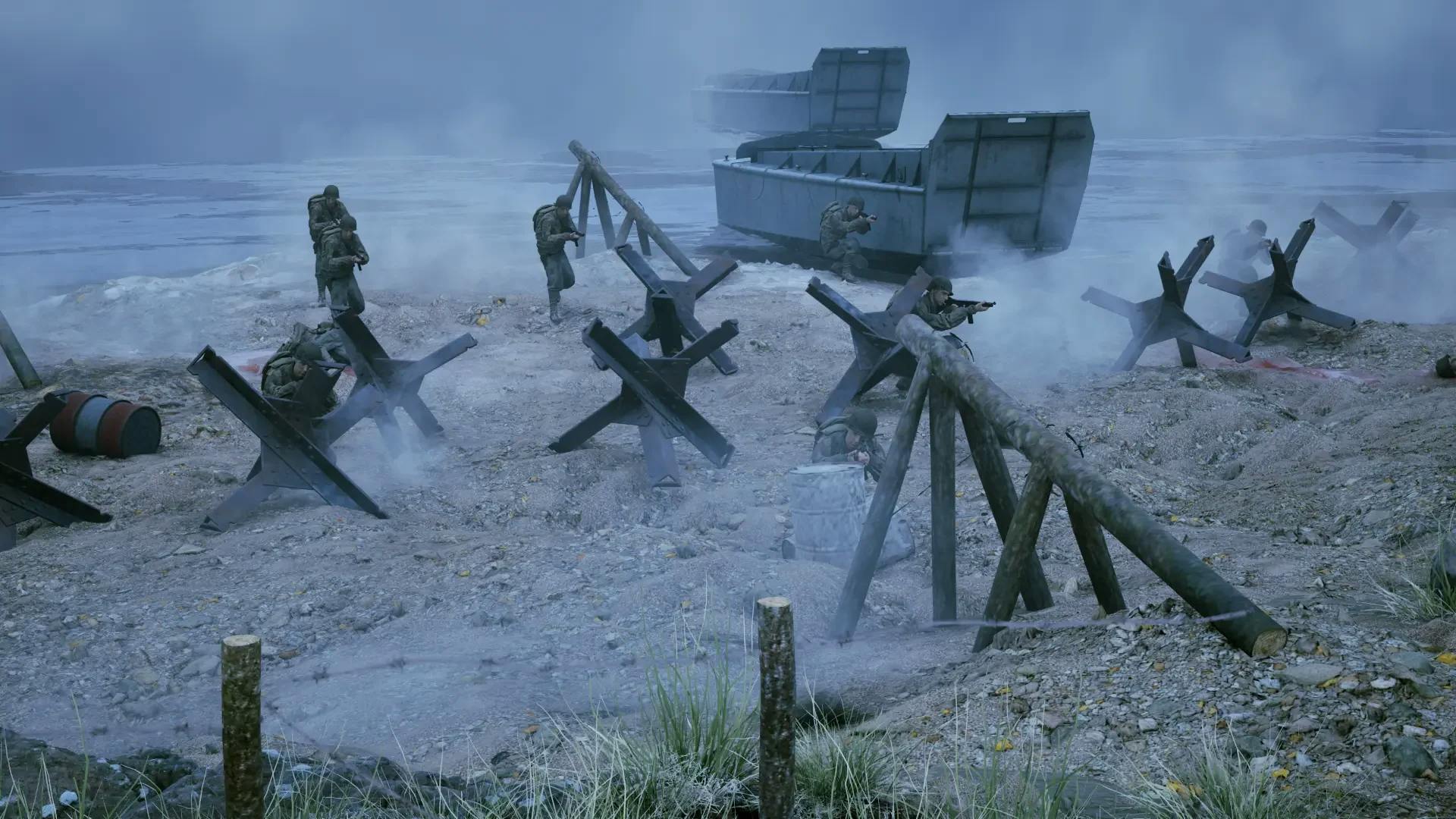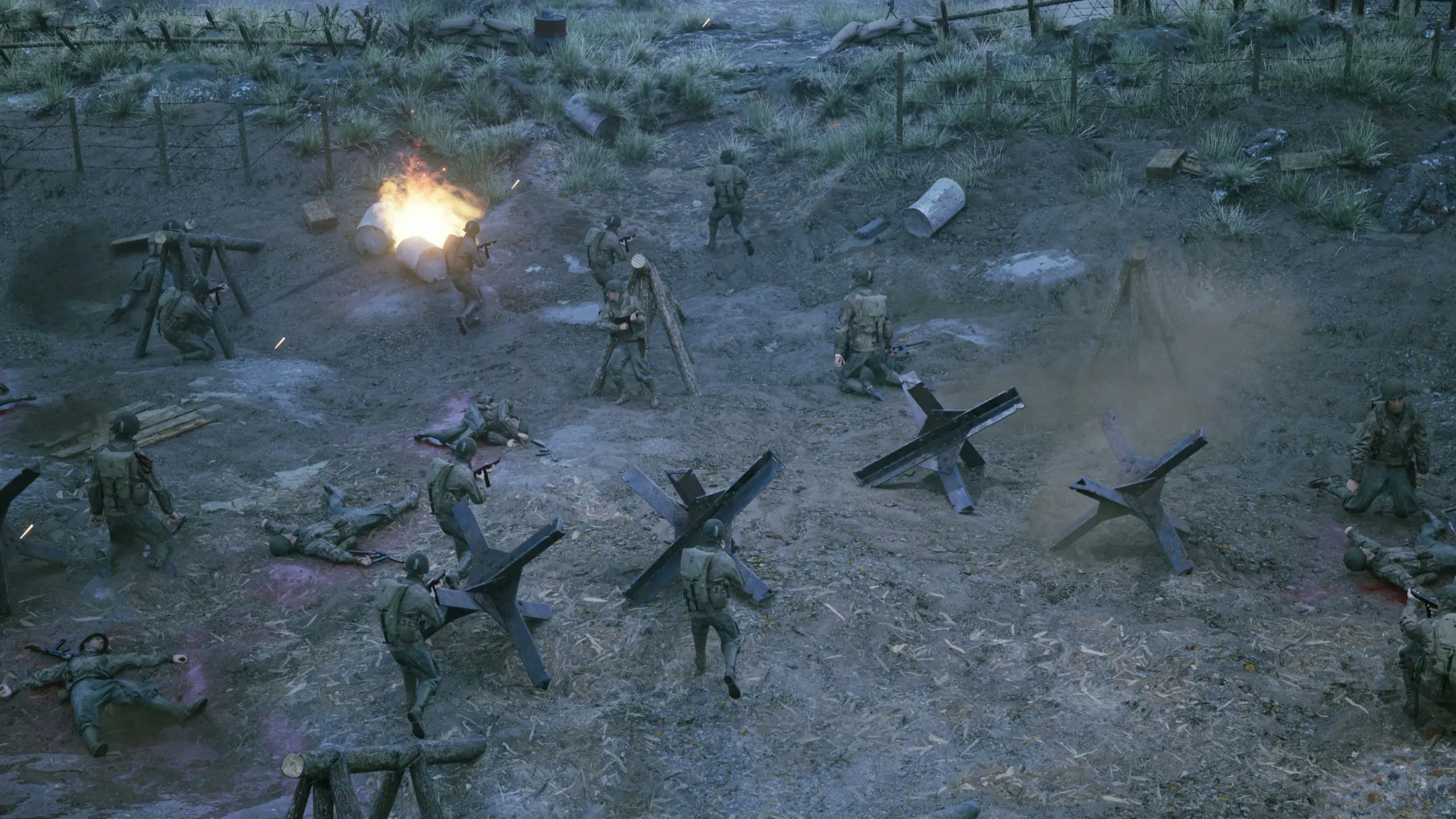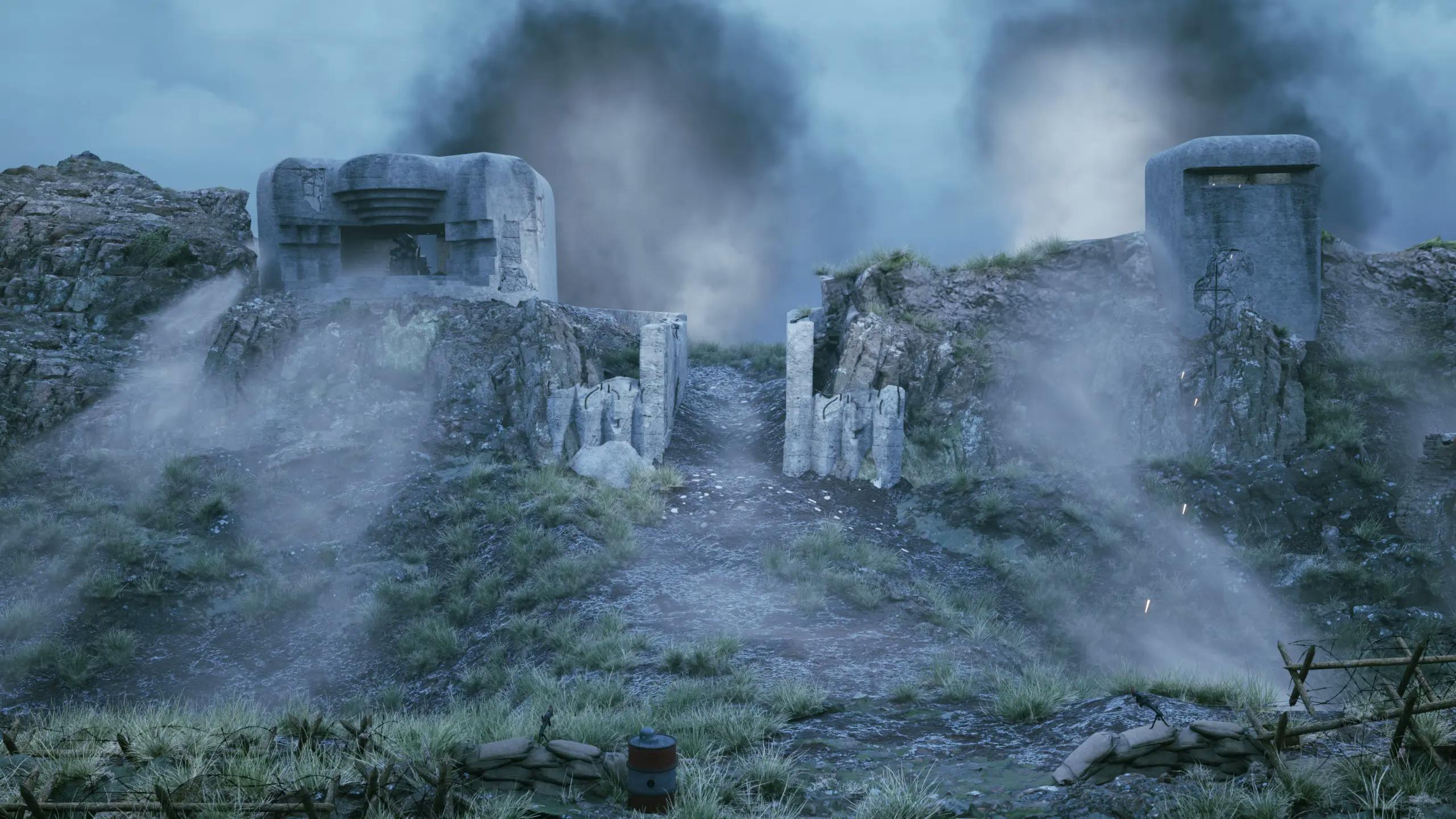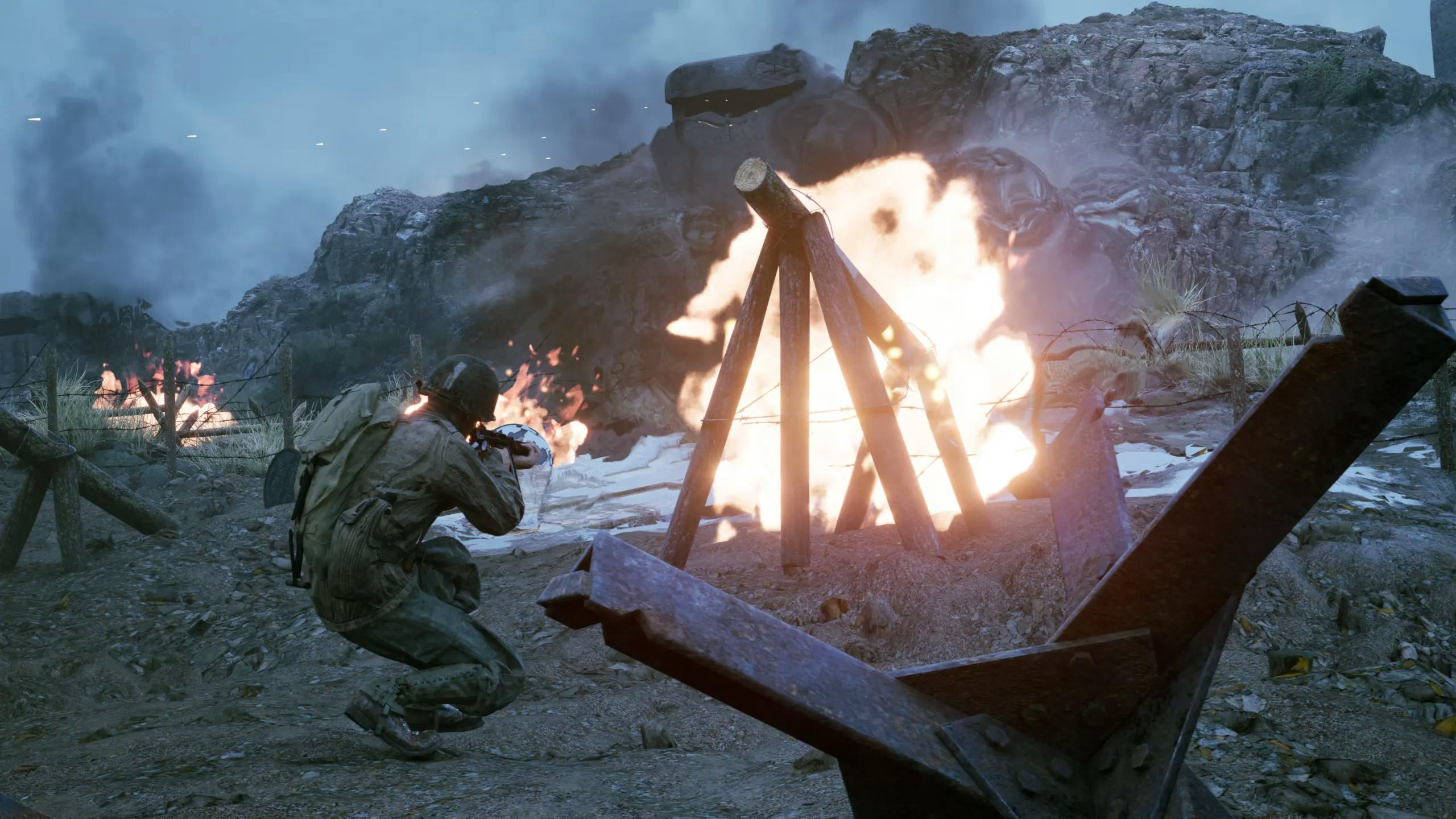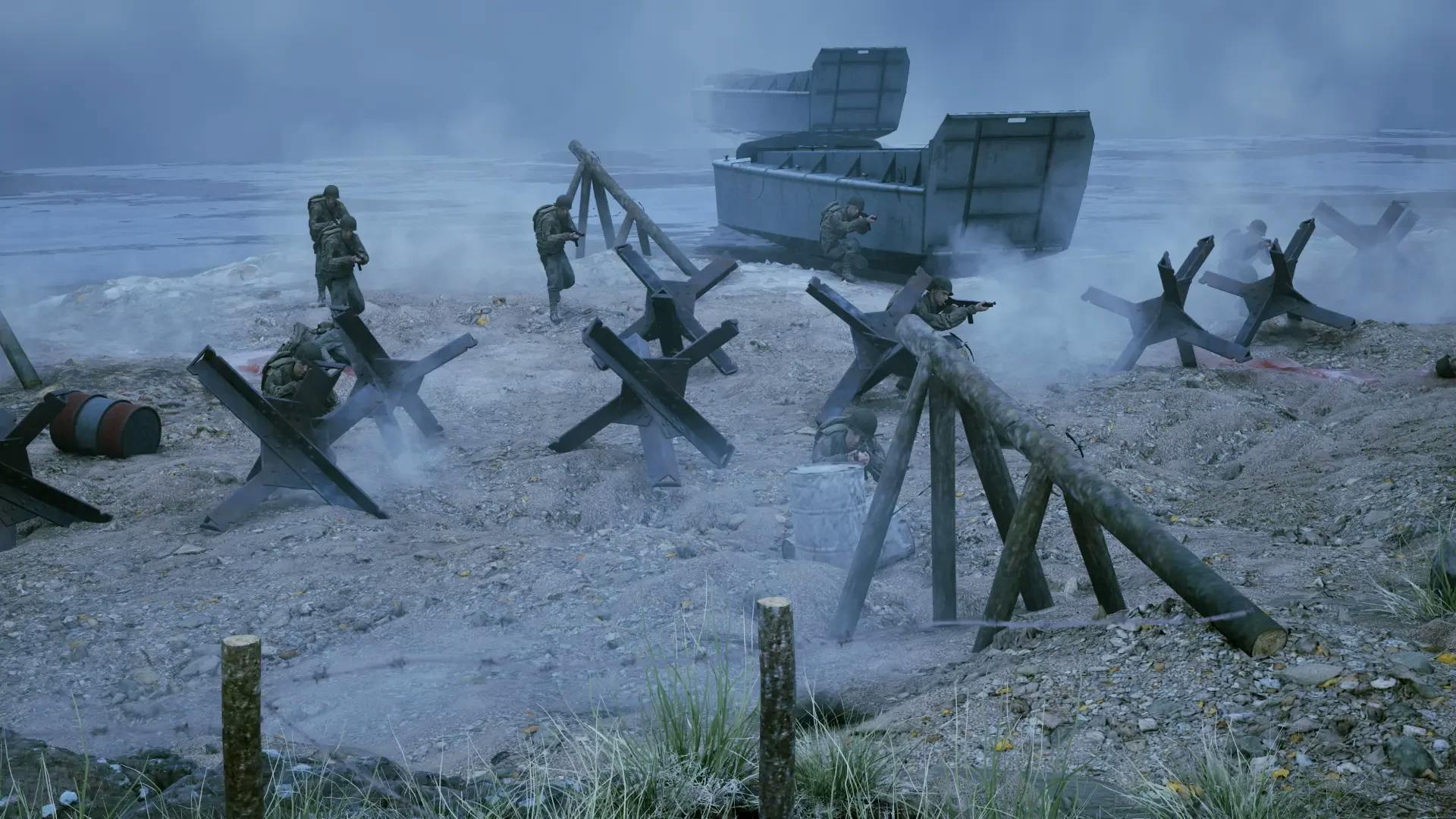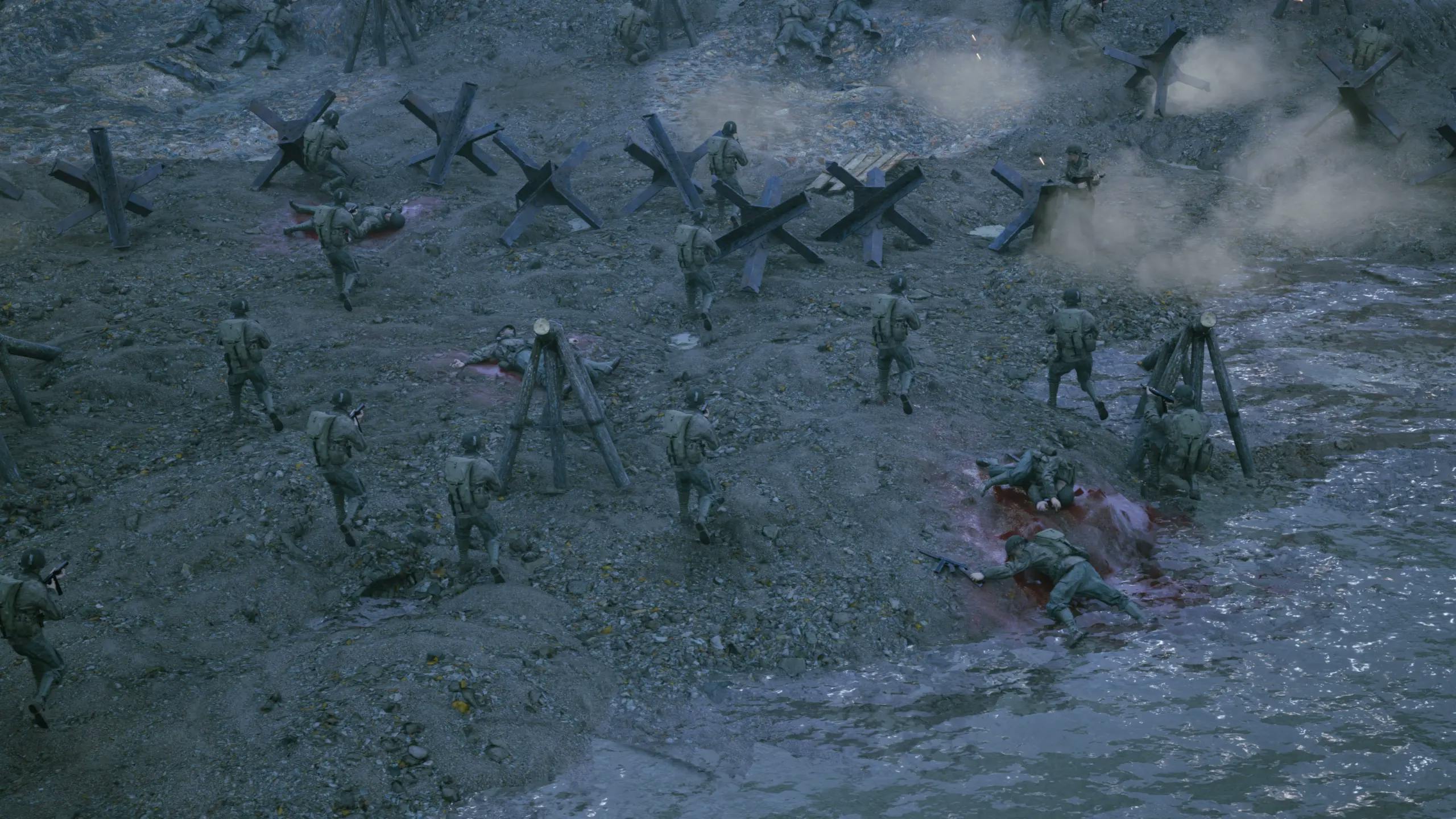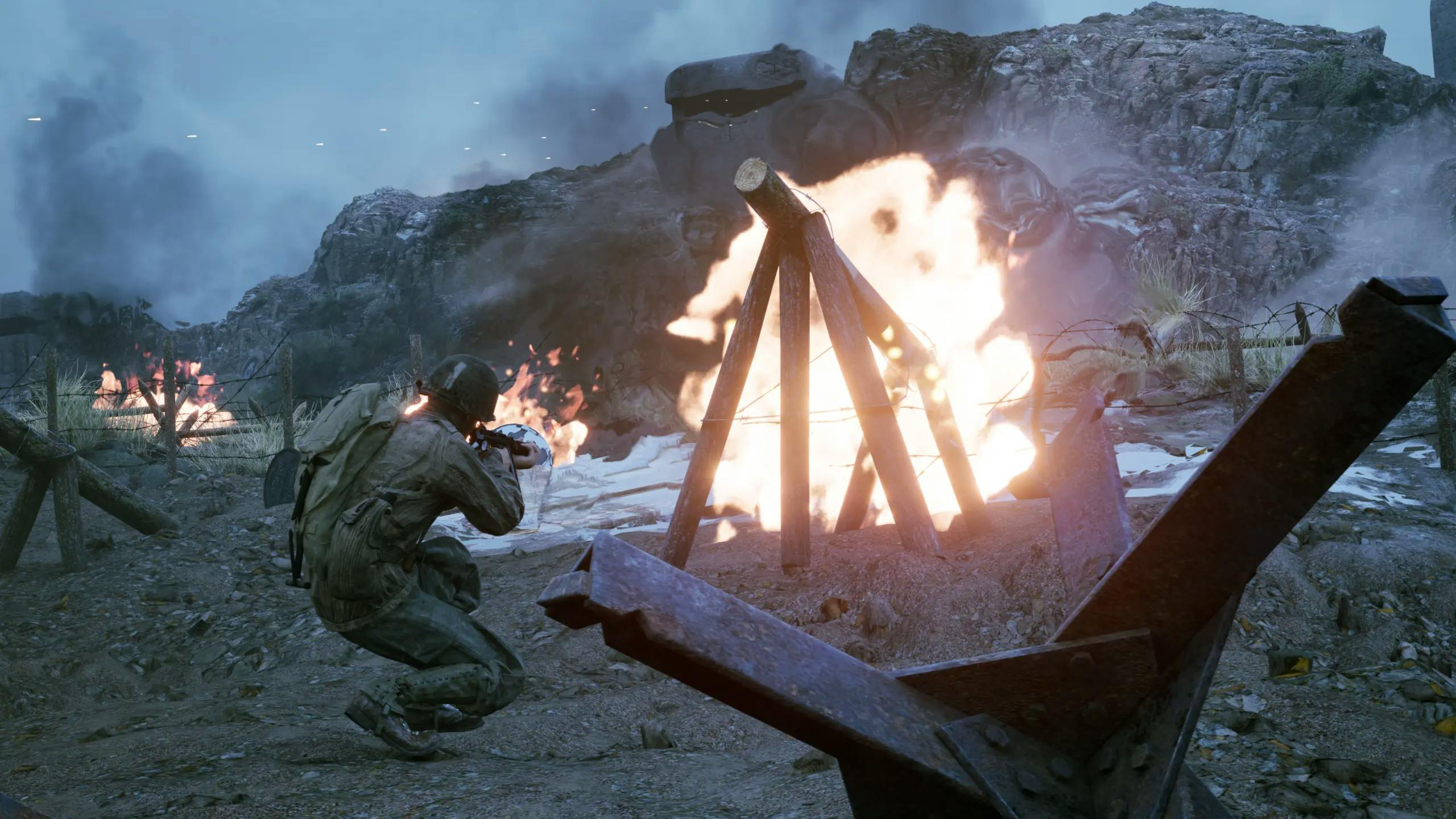
WW2 Omaha
Beach landing, 6th June 1944
About the project
Omaha beach landing is the par of the Virtual museums concept that our company have started. Omaha Beach was one of five beach landing sectors designated for the amphibious assault component of Operation Overlord during the Second World War.
On June 6, 1944, the Allies invaded German-occupied France with the Normandy landings.
“Omaha” refers to an 8-kilometer (5 mi) section of the coast of Normandy, France, facing the English Channel, from east of Sainte-Honorine-des-Pertes to west of Vierville-sur-Mer on the right bank of the Douve River estuary
Project accomplishments
Recreated historically accurate 3D environment
Digital 3D Restoration of Omaha Beach
Post processing, color grading and atmosphere matching
Cinematic
Omaha beach landing day
Landings on Omaha beach were necessary to link the British landings to the east at Gold with the American landing to the west at Utah, thus providing a continuous lodgement on the Normandy coast of the Bay of the Seine.
Taking Omaha was to be the responsibility of United States Army troops, with sea transport, mine sweeping, and a naval bombardment force provided predominantly by the United States Navy and Coast Guard, with contributions from the British, Canadian and Free French navies.
Recreation of
Omaha Beach
landing day, 6th June 1944
Through the use of cutting-edge real-time 3D technology and historical archives, our team has recreated the harrowing events of the Omaha Beach landing on June 6th, 1944.
Our attention to detail includes an accurate depiction of the weather conditions on that fateful day.
As the battle took place on the coast, early June brought with it an unpredictable mix of windy, cloudy, and dark morning conditions that differed greatly from the typical late spring weather.
We have worked tirelessly to recreate the war atmosphere, from the smoke of gunfire, bullets and dead soldiers’ bodies lying down to the chaos of the battlefield.
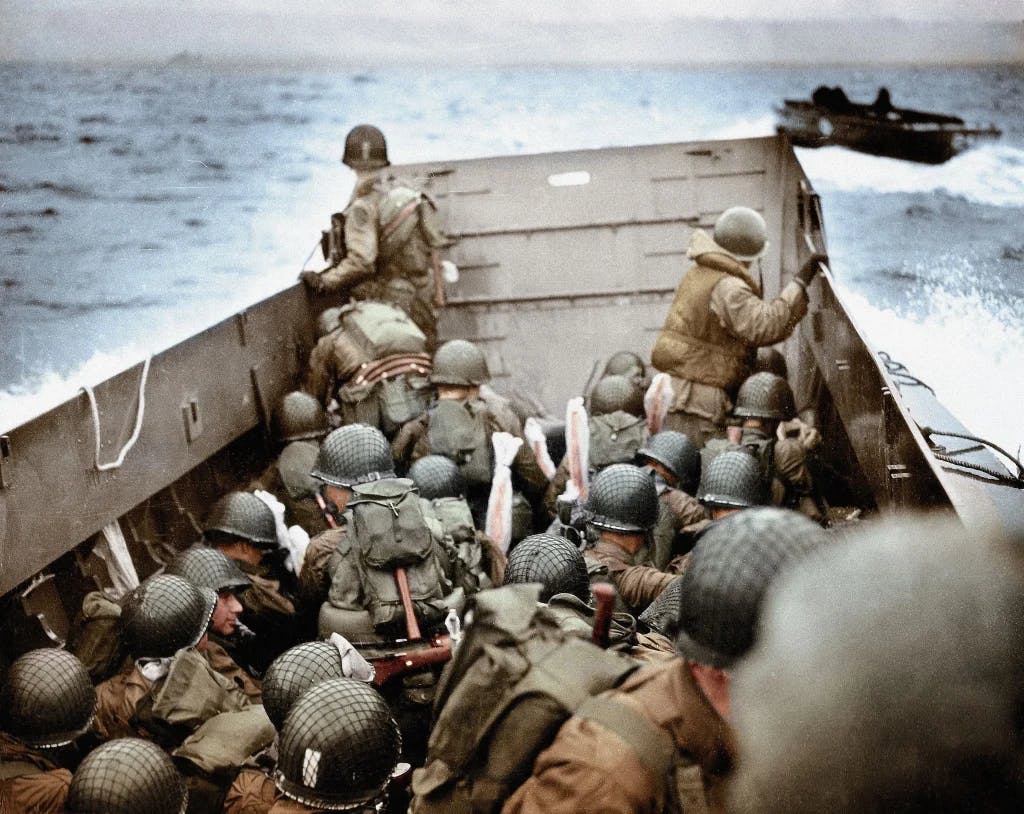
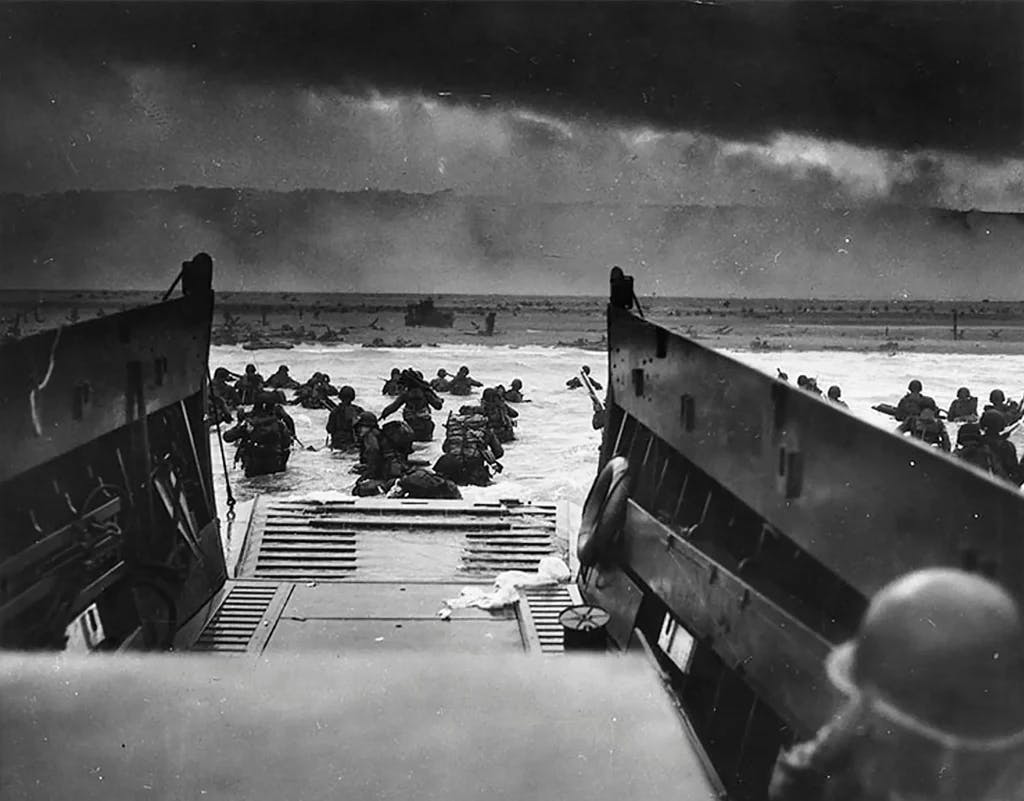
Operation
"Overlord"
The primary objective at Omaha was to secure a beachhead eight kilometers (5.0 miles) deep, between Port-en-Bessin and the Vire River, linking with the British landings at Gold to the east, and reaching the area of Isigny to the west to link up with VII Corps landing at Utah.
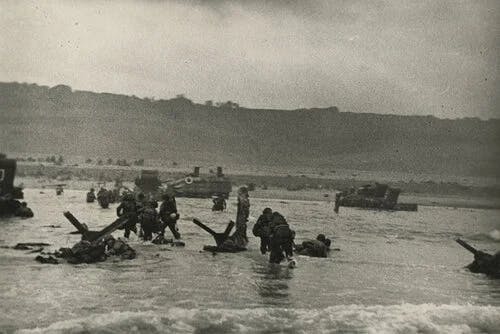
The Allied plan called for initial assault waves of tanks, infantry, and combat engineer forces to reduce the coastal defenses, allowing larger ships to land in follow-up waves. But very little went as planned.
Difficulties in navigation caused most of the landing craft to miss their targets throughout the day. The defenses were unexpectedly strong, and inflicted substantial casualties on landing U.S. troops.
By the end of the day, two small isolated footholds had been won, which were subsequently exploited against weaker defenses further inland, achieving the original D-Day objectives over the following days
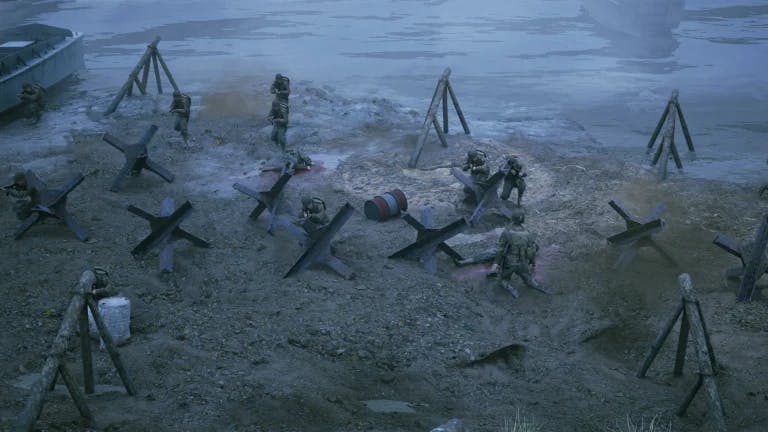
D-day
0630, June 6th 1944
Started at around 6:30, four waves of American solders landed on the beach. The fourth wave landed at around 8:oo.
By 9:30, the Americans had managed to establish a foothold on the bluffs overlooking the beach, but the German defenses were still strong and organized. Despite repeated attempts to push inland, the American troops were largely pinned down and unable to make significant progress.
Reinforcements continued to arrive on the beach through the day, and the American troops were eventually able to break through the German defenses and move inland.
By June 14 the German corps command was reporting the 352nd as completely used up and needing to be removed from the line.
Once the beachhead had been secured, Omaha became the location of one of the two Mulberry harbors, prefabricated artificial harbors towed in pieces across the English Channel and assembled just off shore.
Construction of ‘Mulberry A’ at Omaha began the day after D-Day with the scuttling of ships to form a breakwater.
